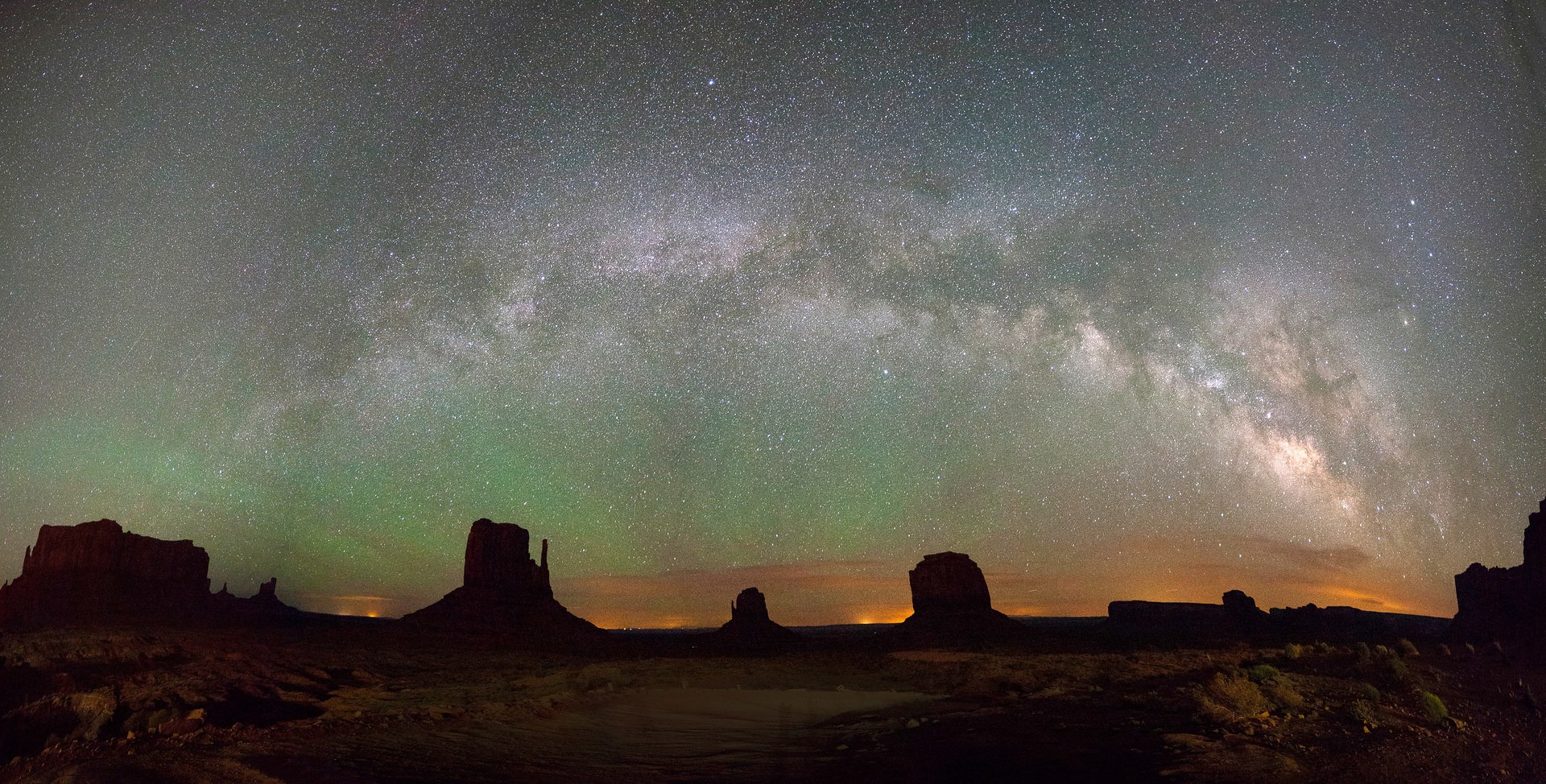You are here
There’s something magical about a night hike. Everything feels quieter. Your footsteps are muffled by the cold ground, and when the air is cold, you can see your breath caught in the light of your headlamp. That feeling of a remote area belonging only to you and your adventure companions only heightens at night, when it feels like the rest of the world is asleep and missing out. By far the best part of adventuring at night is the stargazing. If you can, take time to appreciate the Milky Way when you are far from city lights during a new moon, or hike during a full moon and revel in how it lights your trail.
There are many reasons to hike at night, whether it is for the sheer thrill and novelty, because you want to be that much farther into the backcountry when the sun rises, want to escape the heat of the day, or maybe because you are trying to fit a microadventure into an otherwise busy schedule. In any case, here are a few tips and safety advice for new nighttime adventurers and experienced evening rompers alike.
Bring a red headlamp
A headlamp with a red light and a few different settings, like this one by Petzl, can come in handy when you are out in the backcountry. The red light doesn’t cause our pupils to shrink the same way white light does, which means that you can actually see farther into the night if you light your way with a red beam. It also means you won’t blind your adventure buddies when you look at them on the trail, and it is the best tool if you are setting up for night photography because you won’t ruin your night vision. This headlamp also has multiple features so you can still turn on that bright white light if you need to. It’s a good idea to pack extra batteries, as well.
Hike in a place you know
...especially if it’s your first time night hiking. Better yet, if time allows or if you are the leader of the group, it’s best to do some recon earlier in the day and note any obstacles, potential hazards, or other places where the trail might pose risks. Note if it’s close to any sheer drop-offs or swift moving dangers, if there are rocks or tree branches people might trip on, etc.
Don’t hike alone, and tell someone your plans
Even if you crave the solitude of a solo hike, night hiking just presents more challenges and dangers than getting out during the day. There are more predators and other wildlife out at night, so know what creatures you might encounter in your area and how to deal with them before leaving the trailhead. Having friends out there that you trust can help you make smart decisions as a group rather than barreling ahead into the unknown, and if you do get yourself in trouble, there will be someone there to watch your back. On that note, it’s good to check in with the group at the trailhead and figure out what everyone wants out of the adventure. Is it a casual walk to look at the stars, or will some folks want to log miles and get a workout in? Make sure you’re on the same page so no one gets left behind or stressed out.
Go slow
Your eyes will adjust to the dark, but it will take a couple of minutes. You might also want to hike slower than you normally would and check in with your adventure partners more often. No one wants to be the person who isn’t having fun, but remember that even if you are comfortable at night, your hiking companions might not be. Be more mindful of trail junctions and obstacles, and point them out to your hiking companions as you go so that you all see them to avoid disagreements on the way back.
Drink water and bring snacks
It may feel counterintuitive at first, but as you hike you should be drinking as much water as you would in the day. It’s easy to get dehydrated when the temperature is cooler, and you won’t realize how thirsty you are until it’s too late.
Use a GPS and/or a map
It’s so much easier to get lost at night, and it doesn’t hurt to have and map and compass and/or GPS to help you find your way back if you lose your bearings. Handheld GPS devices are good tools for navigation, and devices like this also have emergency communication capabilities. Just make sure you take a class or learn how to use them ahead of time, as they are not as intuitive as Google Maps on your smartphone. The Gaia GPS app is another useful tool that is made for the backcountry, and it is a little more reliable than other apps that lose your place if you lose service. And nothing beats a map and compass for reliability when you are out in places with no electricity.





Comments
Sign In and share them.